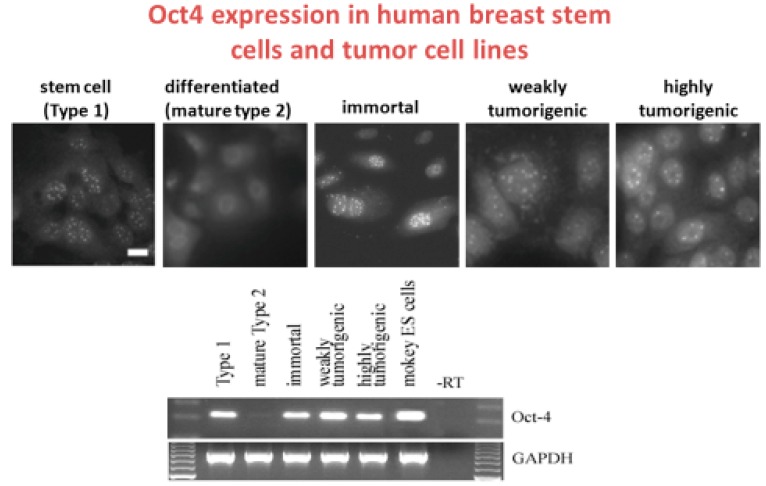Figure 2.
The composite of these two figures illustrates that the clonally- derived normal human adult breast stem cells express Oct4A (Type 1), via immune-histochemical use of fluorescent antibodies to Oct4A in the normal breast stem cells, but not in the differentiated breast cells (Type 2), are still expressed in SV40 immortalized normal breast stem cells, which are not tumorigenic, are still expressed in irradiated and weakly tumorigenic breast stem cells and are expressed in the neu/ErB-2 highly transformed clone. The Type 2 cells were differentiated normal human breast stem cells. The reverse transcription polymerase chain reaction data are correlated with the immuno-histochemical data of Oct4A in this series of human breast adult stem cells. No expression of Oct4 was seen in Type II differentiated cells (lane 2) but Oct4A was still expressed in the immortalized, weakly and highly tumorigenic cells. Monkey ES cells were used as a positive control (lane 6). Lane 7 is a no template control. While the GJIC data were not shown here, the normal breast adult stem cells (Type 1), immortalized, weakly and highly tumorigenic cells have no functional GJIC, as measured by the fluorescent scrape loading/dye transfer technique, whereas the Type 2 cells had functional GJIC. Type 2 or differentiated Type 1 cells were derived from Type 1 or adult human breast stem cells after the Type 1 cells had been exposed to cholera toxin [114]. Scale bars: For Type 1 to highly tumorigenic cells was 20 μm. Permission granted by MDPI Publisher, Basel, Switzerland.

